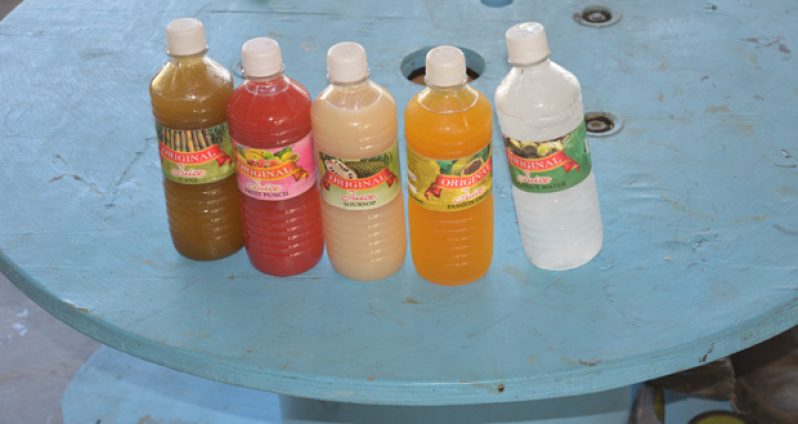NETERAM Ramnanan has been in the business of bottling juices for more than 22 years, and is now looking to secure markets overseas.The seasoned businessman told the Guyana Chronicle that he has what it takes to become successful, and is asking the Ministry of Business and the Guyana Office for Investment (GO-Invest) to support his cause.

Ramnanan sells orange, passion fruit, cherry, cane and other juices, as well as coconut water, all made, packaged, labelled and distributed at his factory at Lot 3 Grant Brathrum, Upper Pomeroon, Region Two.
This publication observed, on a visit to the factory, that the area where the juices are made is scrupulously clean and the packaged products all look attractive. At first glance, it appeared as though the bottled juices were made at one of the well-established factories in the Caribbean or North America.
Ramnanan told this publication that he believes there are markets in North America especially for his coconut water, but he needs some assistance from GO-Invest to tap into those markets.
Through his juice business, Ramnanan has been able to climb out of poverty, and better provide for his family while providing employment for more than a dozen residents on the Essequibo Coast.
He began his juice business in 1985, making cane juice from an old, manually-operated mill; and as the years went by, he was able to save enough money and expand into making other juices. By 1992, Ramanand was packaging and bottling his juices at his factory in the Pomeroon, and he has since managed to establish a niche in the local market.
Over the years, he has received training in agro-processing and management through a number of programmes hosted by Partners of Americas, the Guyana Manufacturing and Services Association, and the New Guyana Marketing Corporation.

From producing less than 500 bottles of juices weekly in 1992, Ramanand now produces 5,000 in that time. For him, business is bright, and will be brighter if he can tap into an overseas market,
He contends that he has the capacity to deliver. This year, Ramnanan is poised to invest close to $65M on expanding his manufacturing operations.

Ramnanan is also appealing to frustrated rice farmers to strongly think about diversifying into fish farming or some other such venture, since the benefits are immense and are guaranteed.
“So, rice and cane farmers,” he said, “you have nothing to lose if you plant fruits; the market is there.”
One reason he is interested in seeing a shift in trends, Ramnanan said, especially among rice farmers, is because of the great demand for raw materials and by-products. As he observed, “We are still not making economic use of our fruits; and tons of rice husk and straw still go waste… We must therefore intensify our efforts to increase the links between industry and our resources.”
Ramnanan is of the firm belief that the Government is in a stronger position to convince rice farmers to diversify.


.jpg)











